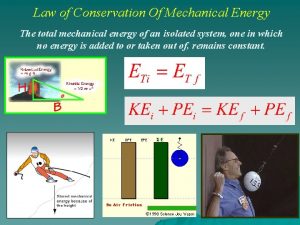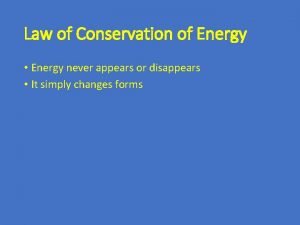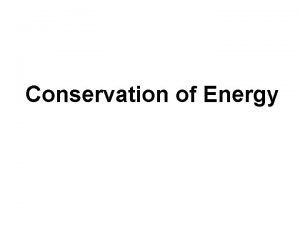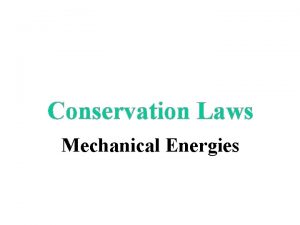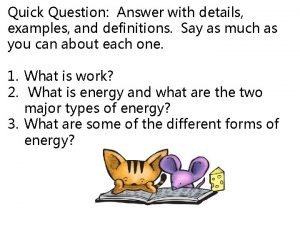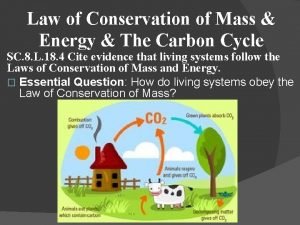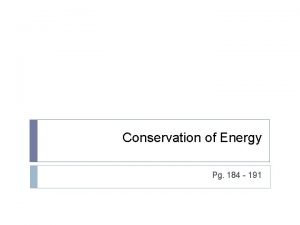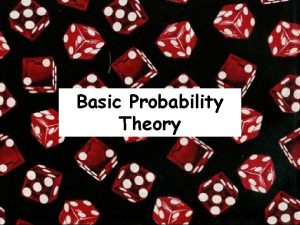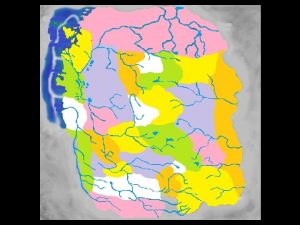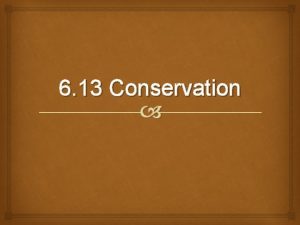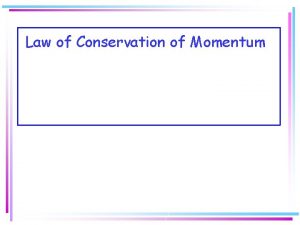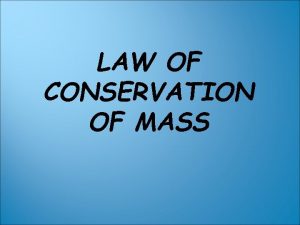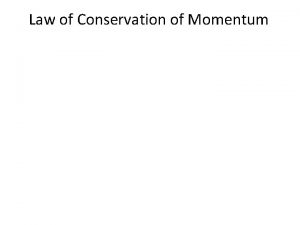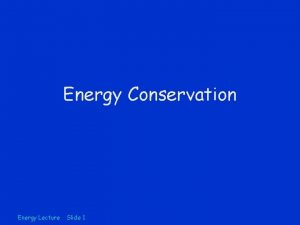Law of Conservation of Energy Energy never appears











- Slides: 11

Law of Conservation of Energy • Energy never appears or disappears • It simply changes forms



Energy Efficiency Ratings

• Sankey Diagrams • Show energy in and energy out • How to calculate efficiency: Useful Energy Out Efficiency = x 100 Energy In

Example A skier at the bottom of a hill has 1, 000 J of kinetic energy. After sliding a ways along the flat, the kinetic energy is 200 J. a) With a decreased kinetic energy, what do you know about the skier’s velocity? decreased EK means decreased velocity

Example A skier at the bottom of a hill has 1, 000 J of kinetic energy. After sliding a ways along the flat, the kinetic energy is 200 J. b) With the skier sliding on a flat surface, is there any change in gravitational potential energy? since there is no change in height there is no change in EP

Example A skier at the bottom of a hill has 1, 000 J of kinetic energy. After sliding a ways along the flat, the kinetic energy is 200 J. c) How much energy was lost due to friction? Ebefore = Eafter EK = EK + Eh 1, 000 J = 200 J + Eh Eh = 1, 000 J – 200 J = 800 J

Try This: A skier on a hill has 5, 000 J of kinetic energy and 5, 000 J of potential energy. After sliding down the hill a ways, their potential energy is 3, 000 J. a) Since they slid "down" the hill, what do you expect for change in potential energy (greater or less)? b) Assuming that there is no loss due to friction, what would be the kinetic energy at the second position? (Use Ebefore = Eafter) c) Since there's always "some" friction loss, would the "actual" kinetic energy be less or more then your answer in b)?

Solution: a) Since height is less, E P is less b) E before = Eafter 5, 000 J + 5, 000 J = EK + 3, 000 J EK = 5, 000 J + 5, 000 J – 3, 000 J EK = 7, 000 J c) Since some of the 7, 000 J would be Eh, EK would be less.

Law of Conservation of Energy Worksheet
 Energy formula
Energy formula Conservation of mechanical energy
Conservation of mechanical energy Law of conservation of energy worksheets
Law of conservation of energy worksheets Energy conservation law
Energy conservation law Law of conservation of energy example
Law of conservation of energy example Example of law of conservation of energy
Example of law of conservation of energy Conservation of mechanical energy examples
Conservation of mechanical energy examples Natural science grade 7 term 3 2020
Natural science grade 7 term 3 2020 The law of conservation of energy states that
The law of conservation of energy states that Kinetic and potential energy
Kinetic and potential energy Law of conservation of energy
Law of conservation of energy Conservation of energy
Conservation of energy

